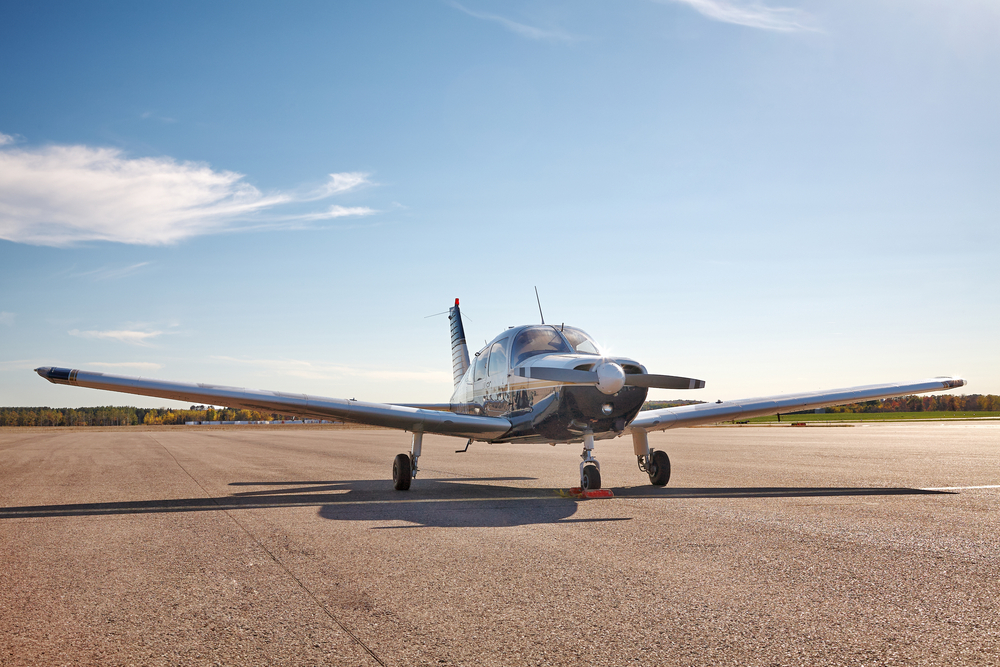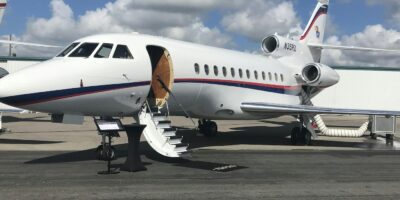Everyone focuses on the purchase price when buying an airplane. “$75,000 for a nice 182!” sounds great until you realize you’ll spend another $15,000-$25,000 per year keeping it flying. The real cost of ownership is way more than the price tag. Here’s what actually empties your wallet.
Quick Answer: Typical single-engine aircraft (Cessna 172/182, Piper Cherokee/Arrow) costs $15,000-$30,000/year in fixed and variable costs if you fly 100 hours annually. Fixed costs (insurance, hangar, annual inspection, taxes, database subscriptions): $800-$1,500/month whether you fly or not. Variable costs (fuel, engine reserve, maintenance reserve): $100-$150/hour when flying. High-performance and complex aircraft cost way more. Budget 15-25% of aircraft purchase price annually for total ownership costs. Flying less means higher per-hour costs because fixed costs dominate.
Fixed Costs – The Monthly Burn
Fixed costs hit you every month whether the plane moves or not. This is what kills people financially – they budget for flying but forget about all the months they don’t fly. Here’s what you’re paying:
Hangar or tie-down: $50-$600/month
Tie-downs at rural airports might be $75/month. T-hangars at busy airports run $400-$600/month. Community hangars fall in between at $150-$350/month. Location matters hugely – same hangar costs $200/month in Iowa, $800/month in California.
Insurance: $1,200-$5,000/year
Low-time pilots pay more. Experienced pilots with clean records pay less. Retractable gear, high-performance, and complex aircraft cost more to insure. A 1,000-hour pilot might pay $1,500/year for a 182. A 150-hour pilot might pay $3,500 for the same plane. Divide annual premium by 12 for monthly cost – $125-$400/month typically.
Annual inspection: $1,500-$3,500/year
That’s for a clean annual with no major squawks. Airworthy aircraft maintained properly might run $1,800-$2,200. Neglected aircraft or those with issues easily hit $3,000-$5,000+. Budget $2,000 average, so $165/month in reserves.
Property tax: Varies by state
Some states don’t tax aircraft. Others charge 1-2% of assessed value annually. A $100,000 plane might incur $1,000-$2,000/year property tax depending on location. That’s $85-$165/month.
Database subscriptions: $300-$800/year
If you’ve got a GPS that needs updates (Garmin, Avidyne, etc.), database subscriptions run $300-$600/year for nav data, obstacles, terrain. Add approach plates and charts, you’re at $500-$800/year total. That’s $25-$70/month.
Loan payment (if financed): Varies
Most aircraft loans are 10-20 years at 5-9% interest depending on credit and aircraft age. $75,000 loan at 7% for 15 years is about $675/month. Pay cash and you skip this, but most people finance.
Total monthly fixed costs: $800-$1,500/month typically
That’s $9,600-$18,000/year before you even start the engine. This is why partnerships make sense – split these costs 2-4 ways and suddenly ownership becomes affordable.
Variable Costs – Every Hour You Fly
These hit you per flight hour. More you fly, more you pay:
Fuel: $50-$120/hour
Depends on aircraft fuel burn and current fuel prices. Cessna 172 burns maybe 8-9 GPH, at $6.50/gallon that’s $52-$59/hour. Cessna 182 burns 12-14 GPH, so $78-$91/hour. Bonanza or Cirrus burns 15-18 GPH, that’s $98-$117/hour. Fuel prices fluctuate, so this number moves around.
Engine reserve: $15-$40/hour
You’re saving for the eventual engine overhaul. Overhauls cost $30,000-$60,000+ depending on engine. Lycoming O-360 (common in 172s/Cherokees) runs 2,000 hours to TBO, overhaul costs $30,000-$35,000. That’s $15-$17.50/hour reserve. Bigger engines cost more – Continental IO-550 overhauls are $45,000-$55,000, reserve maybe $25-$30/hour.
Maintenance reserve: $15-$30/hour
For stuff that breaks between annuals – tires, brakes, hoses, lights, instruments, avionics repairs. Well-maintained aircraft might average $20/hour. Older aircraft with deferred maintenance might run $35-$50/hour. I budget $25/hour and adjust based on actual costs.
Total variable costs: $80-$190/hour
Cessna 172: about $90-$105/hour all-in. Cessna 182: $115-$140/hour. High-performance singles: $140-$190/hour. Twins and turbines are way higher.
The True Hourly Cost
Here’s where it gets real. To know your true hourly cost, you add fixed AND variable costs, then divide by hours flown annually. Most owners fly 50-150 hours per year. Let’s use 100 hours as typical:
Fixed costs: $15,000/year ÷ 100 hours = $150/hour
Variable costs: $120/hour
True cost: $270/hour
Fly only 50 hours per year? Fixed costs become $300/hour, total cost $420/hour. Fly 200 hours per year? Fixed costs drop to $75/hour, total cost $195/hour. The more you fly, the better the economics.
This is why clubs and partnerships work – you split fixed costs, so your per-hour costs drop dramatically even if you fly the same amount individually.
Big-Ticket Maintenance Items
Beyond regular maintenance, there are huge expenses that hit periodically:
Engine overhaul: $30,000-$60,000
Every 1,800-2,400 hours depending on engine type. You can sometimes go beyond TBO if compressions are good and oil analysis is clean, but eventually it’s due. Most owners save via hourly engine reserves, but if you buy an aircraft at 1,700 hours SMOH, you’re buying an overhaul soon.
Propeller overhaul: $2,500-$5,000
Every 2,000 hours or 5 years, whichever comes first. Fixed-pitch props are cheaper ($1,500-$2,500), constant-speed props cost more ($3,000-$5,000).
Paint: $15,000-$30,000
Good paint job lasts 10-15 years if hangared, maybe 7-10 if tied down. Basic single-color paint runs $15,000-$20,000. Custom schemes with multiple colors push $25,000-$35,000. You can defer it cosmetically, but eventually corrosion protection requires repainting.
Interior: $5,000-$15,000
Seats, panels, carpet, headliner. Depends on how nice you want it. Basic serviceable interior is $5,000-$8,000. Custom leather and fancy materials run $12,000-$20,000. Lasts 10-20 years depending on use and care.
Avionics upgrades: $5,000-$50,000+
Technology marches on. ADS-B mandate forced everyone to upgrade. Future mandates will too. A new GPS/navigator runs $8,000-$20,000 installed. Full glass panel retrofit is $30,000-$70,000. Autopilot is $15,000-$40,000 installed. You don’t have to do this stuff, but if you want to stay current with technology, budget for it.
Unexpected Costs
Stuff breaks. You’ll have surprise expenses:
– Alternator failure: $1,500-$2,500 installed
– Vacuum pump: $800-$1,200
– Magneto overhaul: $800-$1,200 each (you have two)
– Starter: $800-$1,500
– Fuel bladder replacement: $8,000-$15,000
– Corrosion repair: $2,000-$20,000+ depending on severity
This is why you keep maintenance reserves. When your alternator craps out 200 miles from home, you need $2,000 for repairs plus getting home. Having reserves prevents these from becoming financial emergencies.
Reducing Costs
Few ways to lower ownership costs:
Partnerships: Split fixed costs 2-4 ways. Instantly cuts your monthly burn in half or more. You sacrifice some availability but save huge money.
Do your own maintenance: Get your A&P or work under supervision of one. Owner-assisted annuals, oil changes, minor repairs – doing this yourself saves thousands annually. Not everyone has the time or inclination, but it’s an option.
Fly more: Sounds counterintuitive, but flying 150 hours instead of 50 hours spreads fixed costs over more hours, lowering your per-hour cost. Plus engines actually do better with regular use versus sitting.
Buy smart: Well-maintained aircraft with good logs cost more upfront but save money long-term. Cheap aircraft with deferred maintenance become money pits. Pay more for good condition initially.
Shop insurance annually: Rates vary hugely between carriers. Shopping saves $500-$1,500/year easily.
Self-serve fuel: Saves $0.50-$1.50/gallon versus full-serve. On 100 hours at 12 GPH, that’s $600-$1,800/year saved.
Twins and Complex Aircraft
Everything’s more expensive with twins and complex aircraft:
– Two engines to maintain and eventually overhaul (double the engine reserves)
– Higher insurance (often 2-3x single-engine rates)
– More complex systems (retractable gear, turbochargers, pressurization)
– Higher fuel burn (25-40 GPH for light twins)
– More expensive annuals ($3,000-$6,000+)
Light twins easily cost $35,000-$60,000/year to operate at 100 hours annually. Cabin-class twins and turboprops run $60,000-$150,000+/year. This is why they’re mostly flown by businesses or wealthy individuals.
The Real Question
Can you afford $15,000-$30,000/year (or more) to own an airplane? If yes, and you’ll fly it enough to justify the costs, ownership’s amazing. Having your own plane, flying whenever you want, building equity – it’s great.
If that’s a stretch financially, consider partnerships, clubs, or renting. You’ll fly more for less money, without the ownership headaches. There’s no shame in renting – many successful pilots rent their whole lives and fly more than owners because they’re not spending money on fixed costs.
But if you do buy, go in with eyes open. Budget realistically. Keep reserves for maintenance. Don’t buy the most expensive plane you can barely afford – buy what you can comfortably operate long-term. Ownership’s rewarding when you can actually afford to fly the plane, not just own it and watch it sit because operating costs are crushing you.


Leave a Reply